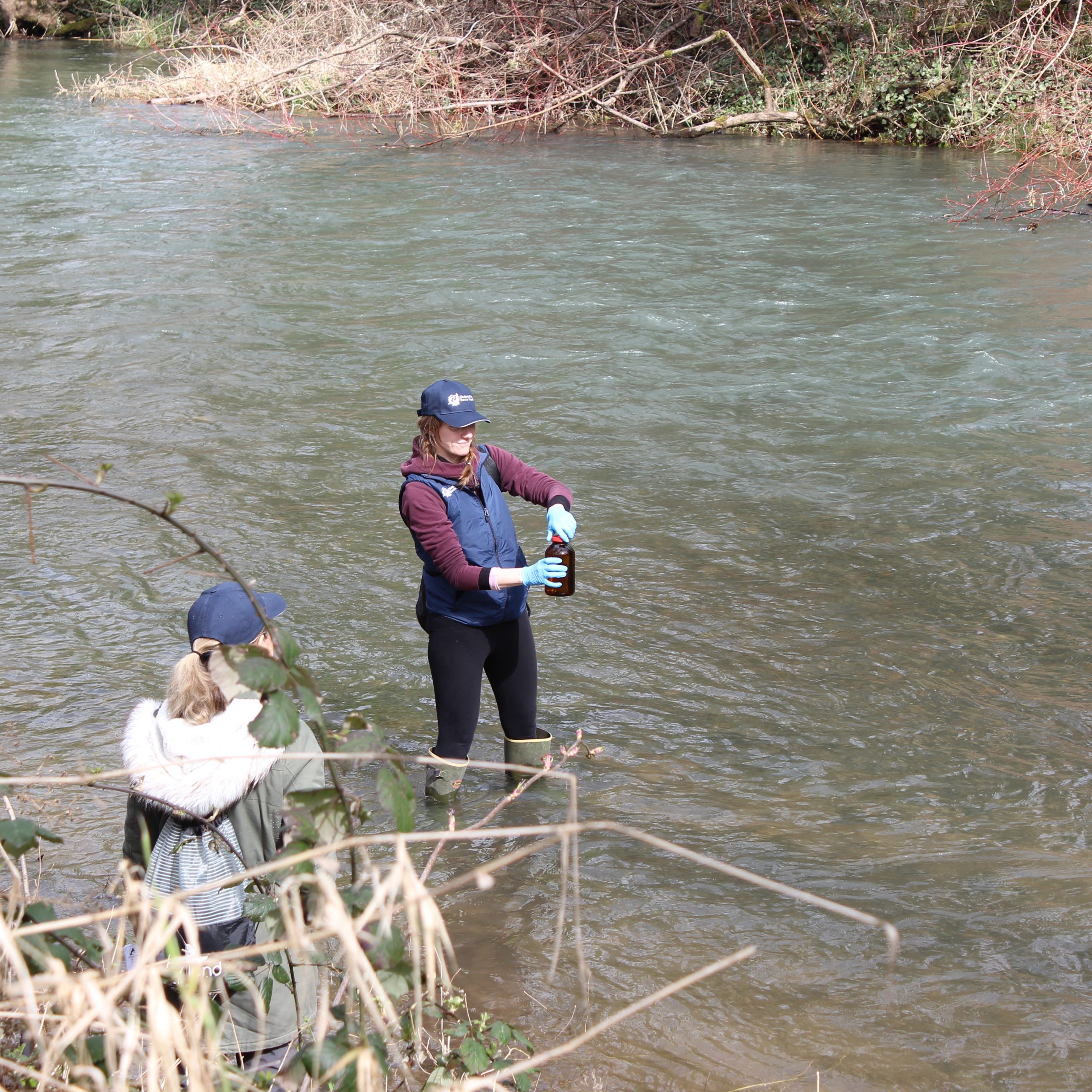
The Clackamas River Basin Council is resuming water quality sampling at several creeks in the Clackamas watershed. Working with the Oregon Dept. of Agriculture and the Dept. of Environmental Quality, CRBC’s Amy Barton gathers water samples, measures flow rates, and monitors stream health every two weeks during spring and summer months.
Water samples collected from five creeks
We collect samples from Deep, Clear, Noyer, Rock and Sieben Creeks because we are monitoring streams that have major potential impacts from roadway runoff and pesticides.
Samples tell us a lot about stream health
The DEQ tests these samples for 145 pesticides and regularly finds pesticide concentrations above the “aquatic life benchmark.” That means our streams have toxicity levels that represent a risk to aquatic life, leading to lasting, detrimental impacts for the plants and wildlife that live in the watershed. Furthermore, 300,000 people receive their drinking water from the Clackamas River, and all these streams all empty into the Clackamas.
The future of stream health
Our streams are showing an increase in pesticides detections, mainly due to higher concentrations of land use. In addition to pesticides, many of our streams also absorb soil runoff and fertilizers which can cause harmful algae blooms. Streams that lack shade also can make the waters too warm.
There are ways we can help our streams!
To help reverse these trends in water quality, we must use pesticides and fertilizers appropriately: right type, right amount, right time to apply, right place, right weather – all these considerations go a long way to keep nasty pesticides out of our water. Maintaining healthy streamside forests also helps immensely. Healthy riparian areas (the land alongside streams) keep water clear and cool for fish, shield against bank erosion and add critical habitat. You can promote healthy riparian areas by planting native trees and shrubs along creeks.
For more info, download our pesticide guide:
clackamasriver.org/education/weed-pesticide-fact-sheets